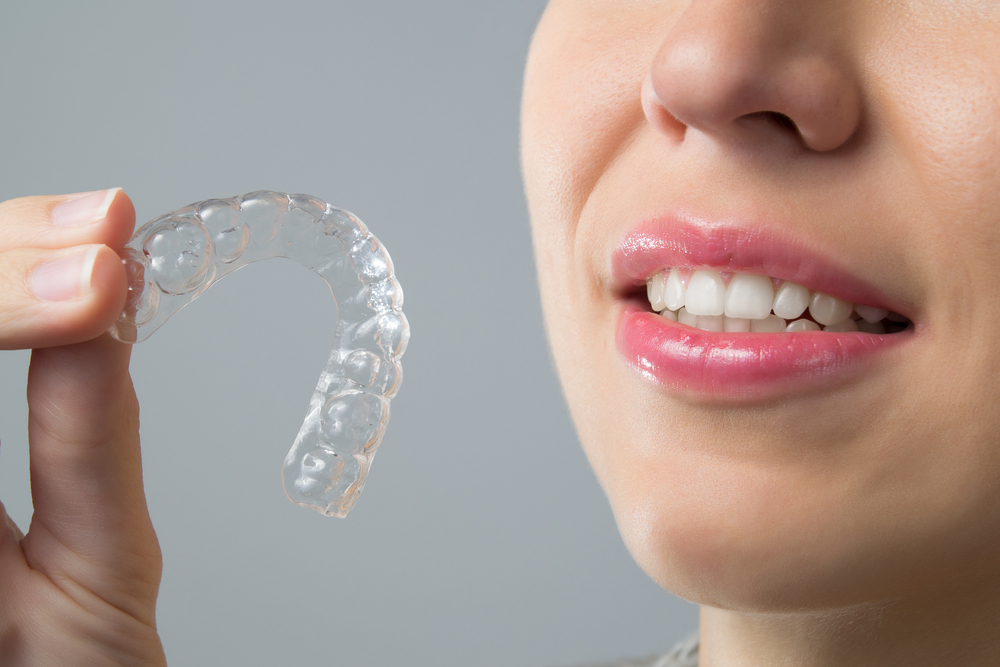Embarking on a journey towards a dazzling smile is thrilling, but are you concerned about orthodontic materials causing a pause for those with allergies?
Invisalign, the go-to clear aligner, is praised for its subtlety, yet could some individuals face allergies to its components?
Curious about allergic reactions during orthodontics in Calgary?
Ensure your quest for a perfect smile stays smooth and allergy-free.
Invisalign, loved by many, employs SmartTrack—a patented thermoplastic material. While generally well-tolerated, it can trigger allergies like redness, swelling, or itching in some.
Understanding Invisalign
Invisalign aligners are clear, removable trays used to straighten teeth without traditional braces. They are custom-made for each patient, gradually shifting teeth into the desired position.
Invisalign aligners are crafted from a patented thermoplastic material called SmartTrack, designed for flexibility and comfort while maintaining effectiveness in tooth movement.
Common concerns with Invisalign include mild discomfort, speech adjustment, and meticulous cleaning. Allergic reactions are rare, but potential allergies are usually related to the aligner material or cleaning agents.
Allergies and Orthodontic Treatments
Allergies linked to orthodontic treatments are uncommon but can occur. Patients may experience reactions to materials like metals or plastics used in braces or aligners.
In Invisalign, potential concerns involve allergies to the thermoplastic material, SmartTrack, or cleaning agents used. It’s crucial for patients to communicate any known allergies to their orthodontist before starting treatment.
Allergies can impact the patient’s experience by causing discomfort, irritation, or swelling, emphasizing the importance of early identification and alternative treatment considerations.
When searching for Invisalign near you, consider its allergy-friendly features to ensure a comfortable and effective orthodontic treatment.
Hypoallergenic Orthodontic Alternatives
Hypoallergenic materials are designed to minimize allergic reactions. In orthodontics, these materials provide alternatives for patients with sensitivities.
Hypoallergenic orthodontic materials include titanium, silicone, and certain plastics. These materials are biocompatible, reducing the risk of allergic responses.
Comparatively, hypoallergenic alternatives offer similar effectiveness to traditional materials. Titanium braces, for example, are lightweight and durable.
Silicone and specific plastics in aligners provide flexibility and comfort, making them suitable options for individuals prone to allergies.
What happens if you are allergic to Invisalign?
If allergic to Invisalign, reactions are rare due to hypoallergenic materials like latex-free and BPA-free SmartTrack® plastic.
Potential allergies may arise from cleaning solutions. Consult an orthodontist for alternatives. Overall, Invisalign minimizes irritation, offering a comfortable and discreet teeth-straightening experience.
If someone has an allergy to metal braces, they may consider exploring alternative orthodontic options that use hypoallergenic materials for a more comfortable experience without irritation.
Orthodontic Materials and Allergies
Discover the field of orthodontic materials and potential allergies for a smoother smile journey!
Metal braces, with their nickel content, may pose challenges for those with nickel sensitivity. Plastic aligners, while trendy, could trigger skin irritation in some.
Even elastics have their considerations. Regular cleaning is essential, but be aware – some solutions may contain allergens.
Prioritize comfort by openly discussing allergies with your orthodontist, exploring alternative materials, and ensuring a personalized, irritation-free experience. Your journey to a straighter smile can be both effective and allergy-conscious!
Choosing the Right Treatment
When choosing the proper orthodontic treatment, focusing on your needs is essential. Tailor your plan to fit your lifestyle and comfort, considering factors unique to you.
Discuss thoroughly with orthodontic professionals, seeking their guidance and openly communicating your concerns and expectations. Striking a balance between treatment effectiveness and hypoallergenic considerations is critical.
Explore alternative solutions that work effectively and align with your allergy-conscious priorities. Make your smile journey a personalized, informed, and comfortable experience.
Tips for Managing Allergies during Orthodontic Treatment
- Pre-treatment Allergy Testing:
Opt for allergy testing before your orthodontic treatment. The compass points out potential triggers, ensuring a smooth ride ahead.
- Communication with Orthodontic Professionals:
Keep the conversation flowing with your orthodontic team. Share allergy test results, concerns, and preferences. Blend our know-how with your insights for a customized plan uniquely yours.
- Managing Symptoms and Discomfort:
Tackle symptoms head-on! Stick to prescribed medications, follow recommended protocols, and consider cool compresses or hypoallergenic alternatives for extra comfort. Your orthodontic journey just levelled up – it’s time for a smile that sparkles inside and out!
Totally Orthodontics: Navigating Comfort and Clarity
Exploring hypoallergenic orthodontic alternatives is vital for those concerned about allergies during treatment.
Invisalign, with its latex-free, BPA-free SmartTrack® plastic, minimizes risks. While rare, allergies may arise from cleaning solutions.
Consulting orthodontists at Totally Orthodontics ensures a personalized and comfortable teeth-straightening journey, addresses concerns, and enhances patient well-being.

